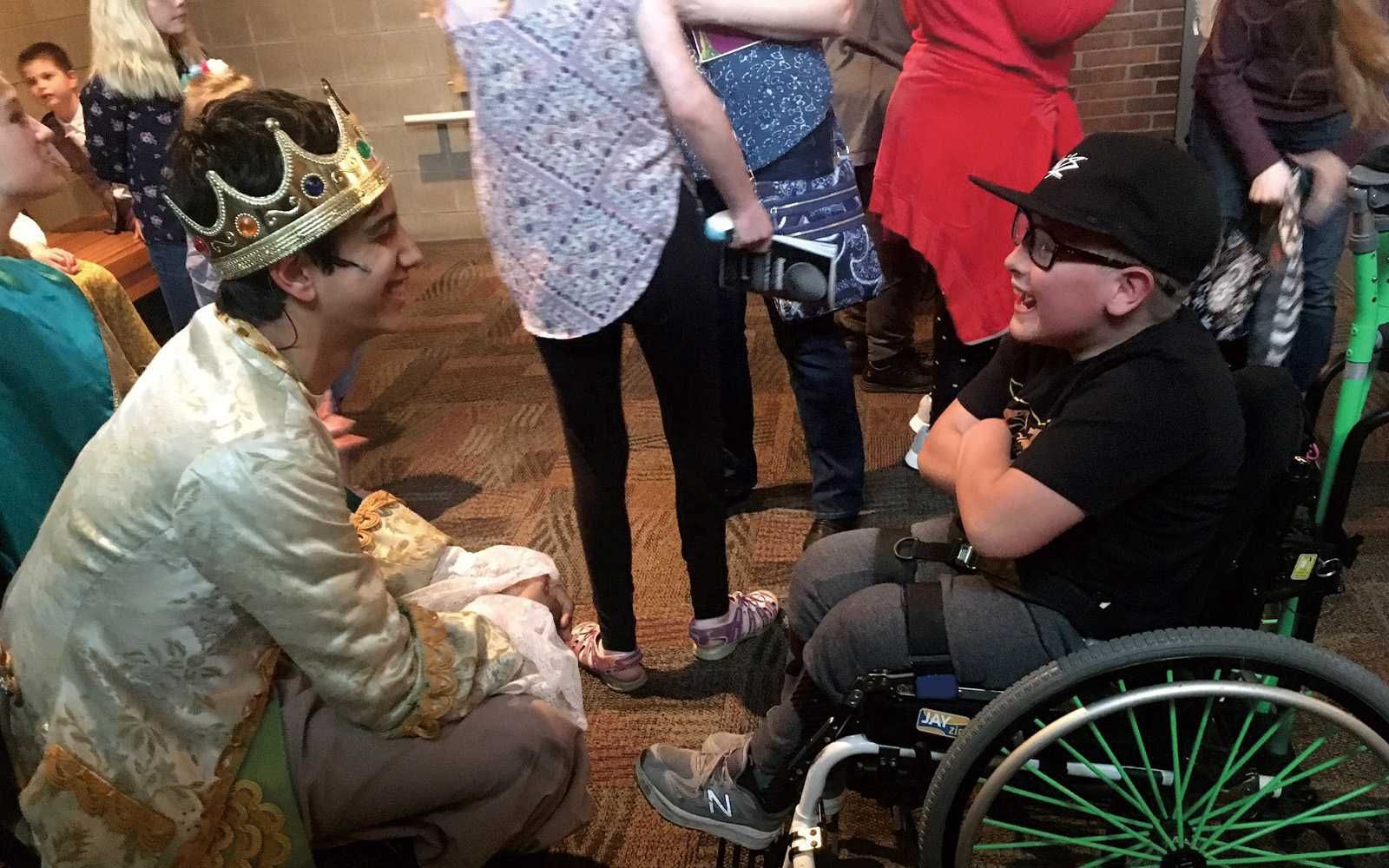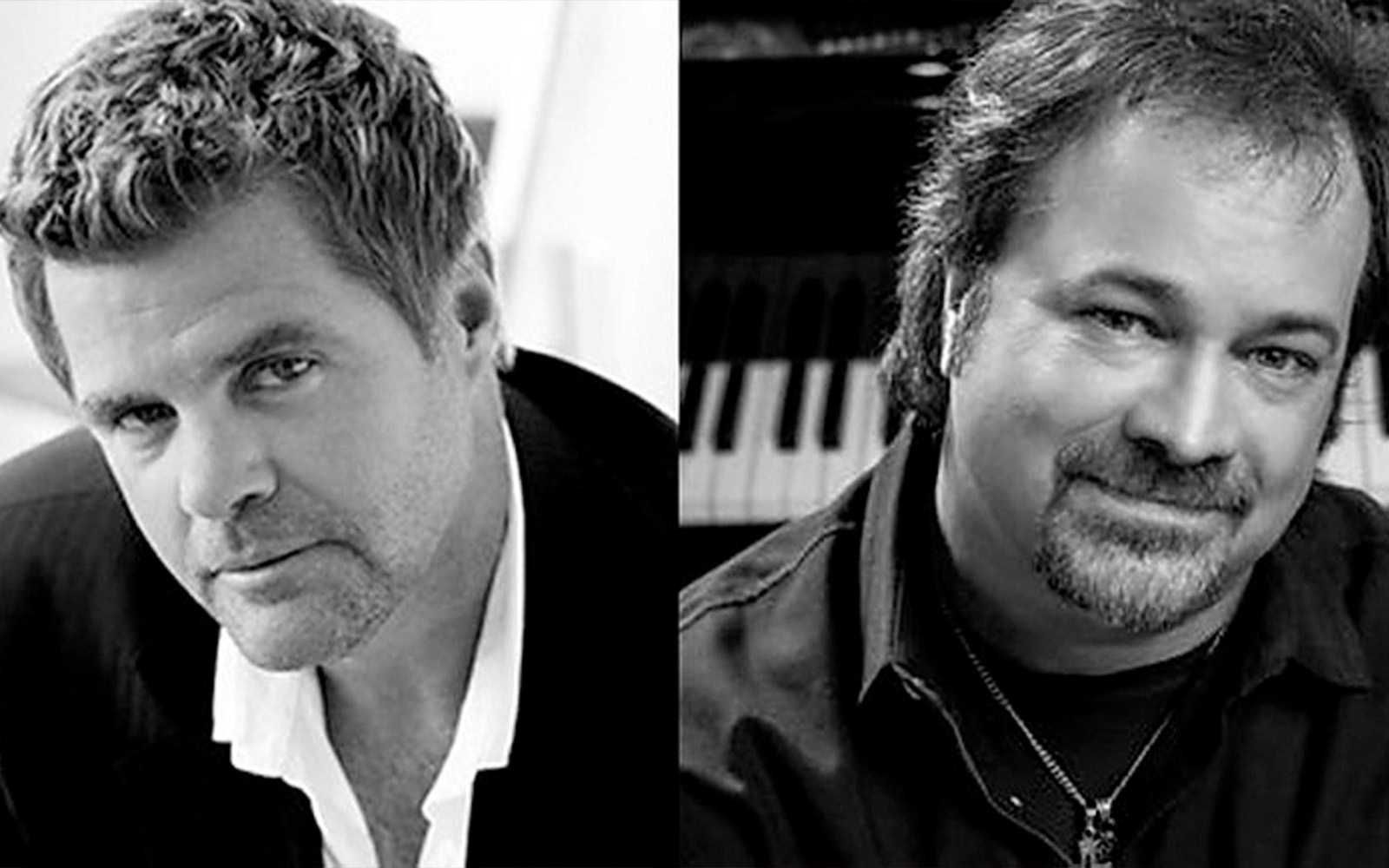Venues and arts organizations have long made allowances for physical disabilities, complying with federal standards for wheelchair access and other ways to make their programming more inclusive.
But in recent years there has been more attention paid to those with developmental challenges and issues like autism which may require some attention to detail in the staging of productions.
The Civic’s Project Lights up
Fort Wayne’s arts community has been working diligently in the last few years to address those needs within our area, including sensory-friendly productions which are open only to those special needs patrons and their families.
With the help of the AWS Foundation, more organizations have been able to receive the funding through grants and the training through workshops to navigate some of the important ways that popular programming can be adapted to suit those for which usual production details can prove problematic.
Fort Wayne Civic Theatre was first to address this need and to work with AWS to formulate a plan for their performances, an effort they’ve called Project Lights Up.
“There were discussions in the community with representatives from AWS about programming,” said Phillip Colglazier, executive director for the Fort Wayne Civic Theatre. “We talked with our board about what it meant to do these performances and what we could do to serve those needs.”
As part of that process, the Civic began putting information on their website about what to expect at performances, a heads-up for those who might wish to attend the performances. In some ways a show can be adapted to lessen the affect on those who may be sensitive to the sound and lighting, but in other ways it is as effective to prepare the audience for what is to come.
“For Chitty Chitty Bang Bang, there were flashpots with smoke and flash, and we left those out,” said Eunice Wadewitz, music and education director for Fort Wayne Civic Theatre. “Some of the lighting we made not as bright or got rid of altogether. For our recent production of Matilda, we got rid of the strobe lighting, but some of the effects we left in and at the top of the show, Phillip and our technical director came out and explained what was going to happen and showed them the effect so they could be prepared for it.”
The Civic has done about a dozen of these sensory-friendly performances in recent years, and several other arts organizations are following suit, including Fort Wayne Dance Collective, Fort Wayne Ballet, and Fort Wayne Youtheatre.
Fort Wayne Philharmonic will present their first sensory-friendly performance in April. Each organization has found ways to make the performances, which are free to and limited only to families with special needs, work so that the audience is comfortable, but the artistic vision of the show remains intact.
INformation is key
“The shows themselves have not been changed much,” said Todd Espeland, executive artistic director for Fort Wayne Youtheatre. “We have the house lights at half and some sound effects are lowered, but much of what we do to make the show sensory friendly is providing information to audience members and their families.
“On our website we provide a visual guide to the show which includes a character breakdown with images and a scene-by-scene breakdown of the play. In our curtain speeches we will show characters or play sounds that might surprise the audience. This lets the audience know what to expect. With the name change to ‘Youtheatre Sensory Friendly Performances,’ we have added a pre-show Touch Tour, lead by our sensory technician, where audiences can feel and handle items used in the show. This includes tactile costumes and handling specialty props like fake swords and giant puppets. The Touch Tour also has places for audiences to interact with the show.”
The sensory technician for Fort Wayne Youtheatre is Shelby Lewis who, in addition to her extensive background in theater, is also a registered behavior technician, providing her with unique insight into these issues.
Lewis will also serve as consultant and host for the Philharmonic’s foray into sensory-friendly performances, using her platform to prepare audiences for what may happen along the way.
“The very basic approach to sensory-friendly productions is ‘lights up, sound down,’” Lewis said. “But we also let them know if there are some sounds like thunder, lightning, a siren. We can turn those down, but we can also provide cues that those are about to happen. You just need to put in some mechanism so that the audience knows that something is coming up.
“For example, in Rapunzel, the witch had a loud cackling laugh, which might be triggering for some. So we had the actor come out on the stage before the show and do it so they knew what to expect.”
The Ballet joins in
Fort Wayne Ballet offered its first sensory-friendly performance in 2018 with its holiday tradition, The Nutcracker. That effort continued with Cinderella in March 2019, Nutcracker in 2019, and this month’s performance of A Midsummer Night’s Dream.
“First, we offer the performance slightly earlier in the evening to try to work with schedules better,” said Tracy Tritz, ballet mistress and director of outreach for Fort Wayne Ballet. “We only reserve a certain number of seats to ensure plenty of room and personal space and allow people to pick where they feel most comfortable.
“We clearly mark all areas of the theater with bold signs and have a PDF available on our website with detailed pictures of the theater so they can get acquainted with the space before ever arriving at the theater. We keep the lights in the theater brighter than a normal performance, keep the sound below a certain decibel level, and keep the theater doors open during the performance so the audience can come and go as needed. We eliminate all abrupt sounds and visual effects such as pyrotechnics.”
In addition to changes in the theater itself, there are also ways to provide a comfortable retreat for those who need a bit of a reprieve from the action.
“It’s good to have a calming room,” Lewis said. “Preferably a designated area or ideally a full room, where people can go if they need to leave for awhile.”
“We have areas for people who may be on different places on the spectrum,” Colglazier said. “We have a calm area and an active area so they can find a place that helps them during the performances, and there are monitors so they can still follow what’s happening on stage if they want.”
“Before the show through intermission we have therapy dogs available in the lobby in the theater for emotional support and comfort,” Tritz said. “We provide an activity area which includes a coloring station and a touch station of different costumes, shoes, props, and masks from the performance, and a quiet area removed from bright lights and heavy traffic areas. Before the show we have costumed dancers in front to greet the audience and after the performance the entire cast goes out to meet with the patrons. We also provide sensory-friendly equipment through a check out system and concessions.”
Facilitating at the Arts Campus
Along with AWS, Arts United has taken a leadership role in helping their organizations address the needs for sensory-friendly performances.
“Arts United is excited that many groups are presenting sensory-friendly productions at Arts Campus Fort Wayne,” said Luke Hollinger, technical director for Arts United Center. “While we don’t produce these events, we help facilitate by offering a framework of support that helps the groups provide a consistent experience for all the individuals and families that attend. Arts United, with the partnership of the AWS Foundation, was one of the first venues in Fort Wayne to offer sensory bags to patrons. These are kits that families can request for use during a production that contain items such as noise-canceling headphones, a weighted item that can be rested around the shoulders, fidget devices, and others. We and all of the participating organizations meet often to discuss how to make the individual programing more collaborative and what each can do to improve the program for all.”
These organizations not only receive funding to provide these shows thanks to the AWS Foundation, but they work closely with AWS in always improving these performances for the area.
Joni Schmalzried, who has served as chief programming officer at AWS for just over a year, is grateful for the partnerships she has seen grow from this programming.
“It’s been great for me to realize I’m living in a community, and not just in Allen County but all of Northeast Indiana, that is working so hard to include everybody in their productions,” Schmalzried said. “And they aren’t just saying the words but are walking the walk. And it isn’t just those who attend the shows who feel the impact, but the dancers, actors, ushers, and all of the people who work at these venues are feeling the impact, too.”
With quarterly meetings to keep the conversation moving and their efforts moving forward, AWS and the Fort Wayne arts community are making art more available to everyone in the area.
“It’s important not to lose focus,” Schmalzried said. “We need to keep an eye on the bigger picture. We want to provide access to enjoy things happening in the community to everyone. They need to know, ‘Do I have a place to live? A place to work? A place to recreate? To enjoy social activities?’ This is just a small part of something much bigger.”
 Submit Your Event
Submit Your Event



